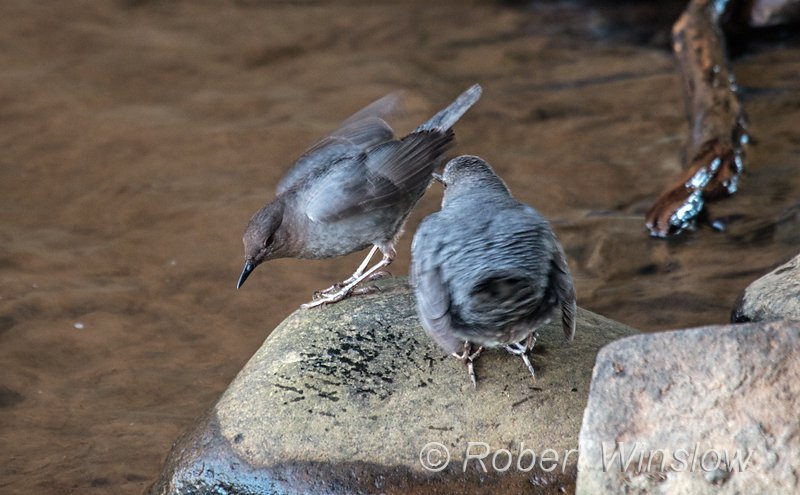
The following article was provided by Stephen Monroe of Durango. Stephen obtained an Audubon grant through the Weminuche Audubon Society chapter to help fund expenses associated with this study.

Prior to 2016 relatively little was known about the Animas River’s American Dipper population. The Gold King Mine spill in 2015 raised concerns about the health of the American Dippers in the river, and a group of volunteers began to study the birds. The American Dipper Project was formed with the objective of studying the breeding success of American Dippers (Cinclus mexicanus) on the Animas River and other streams in southwestern Colorado. Each year from 2016 into 2020, volunteers have completed surveys annually, learning about nesting behavior and success, nest site fidelity, and the unique personalities of American Dippers. In 2018 a catastrophic wildfire burned portions of the Animas watershed, and subsequent flooding introduced large volumes of sediment to the river, potentially impacting American Dipper habitat and food sources.
Surveys to date have included sites in disturbed reaches of the Animas River as well as tributary streams that have not been affected by mining or fire. In 2020 we’ve begun to expand the project to the upper San Juan River near Pagosa Springs. Data collected during the first few years of this project have been entered into the NestWatch database (http://nestwatch.org) and will be shared soon.
In Spring of 2020 we discovered a nesting pair of dippers under a highway bridge over Hermosa Creek north of Durango. Hermosa Creek drains the watershed burned by the 416 Fire in 2018 and presence of nesting dippers was an encouraging sign of watershed recovery. We learned the Colorado Department of Transportation (CDOT) was planning a maintenance project on the bridge during the nesting period. We informed CDOT about the nesting dippers and consequently CDOT postponed the project. The American Dipper is protected by the federal Migratory Bird Treaty Act, which prohibits disturbance of active nests. In early June we observed two fledglings dipping and dancing on top of the nest, two nestlings watching from inside, and both parents singing on a nearby beach. A day later all four fledglings had left the nest and headed upstream. The bridge construction project will move forward during the month of June.
The Trump administration has recently threatened to dramatically undermine the Migratory Bird Treaty Act. Learn more about the proposed changes and help prevent weakening of the Act by commenting at http://www.audubon.org take action tab.
For additional information about the American Dipper Project and to be included in the volunteer participant list go to: birdmentor.com/dipper-project/
Or contact: Stephen Monroe at sm3662@gmail.com
Following are pdf files with survey protocols and data collection sheets which may be downloaded and printed for use in this survey.